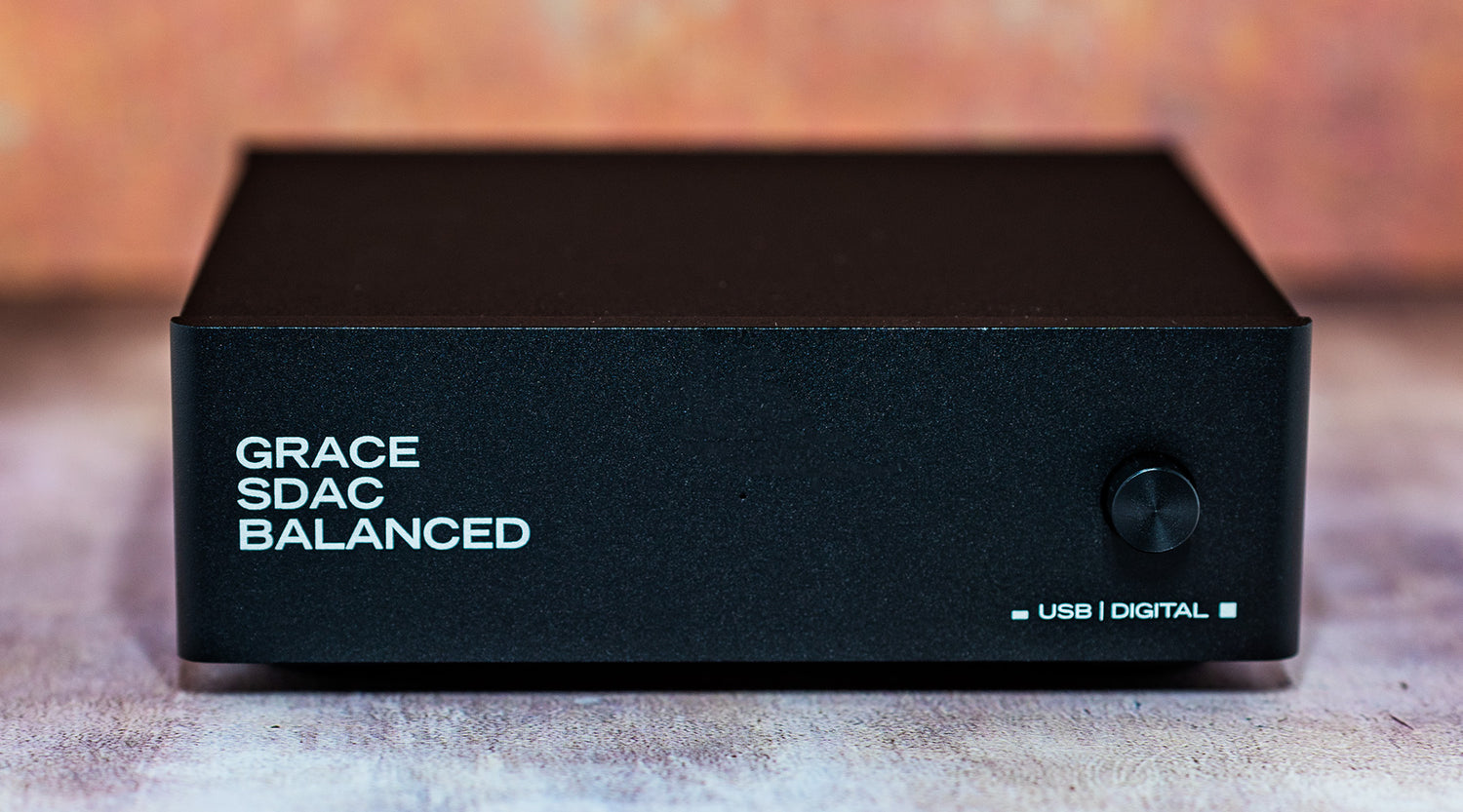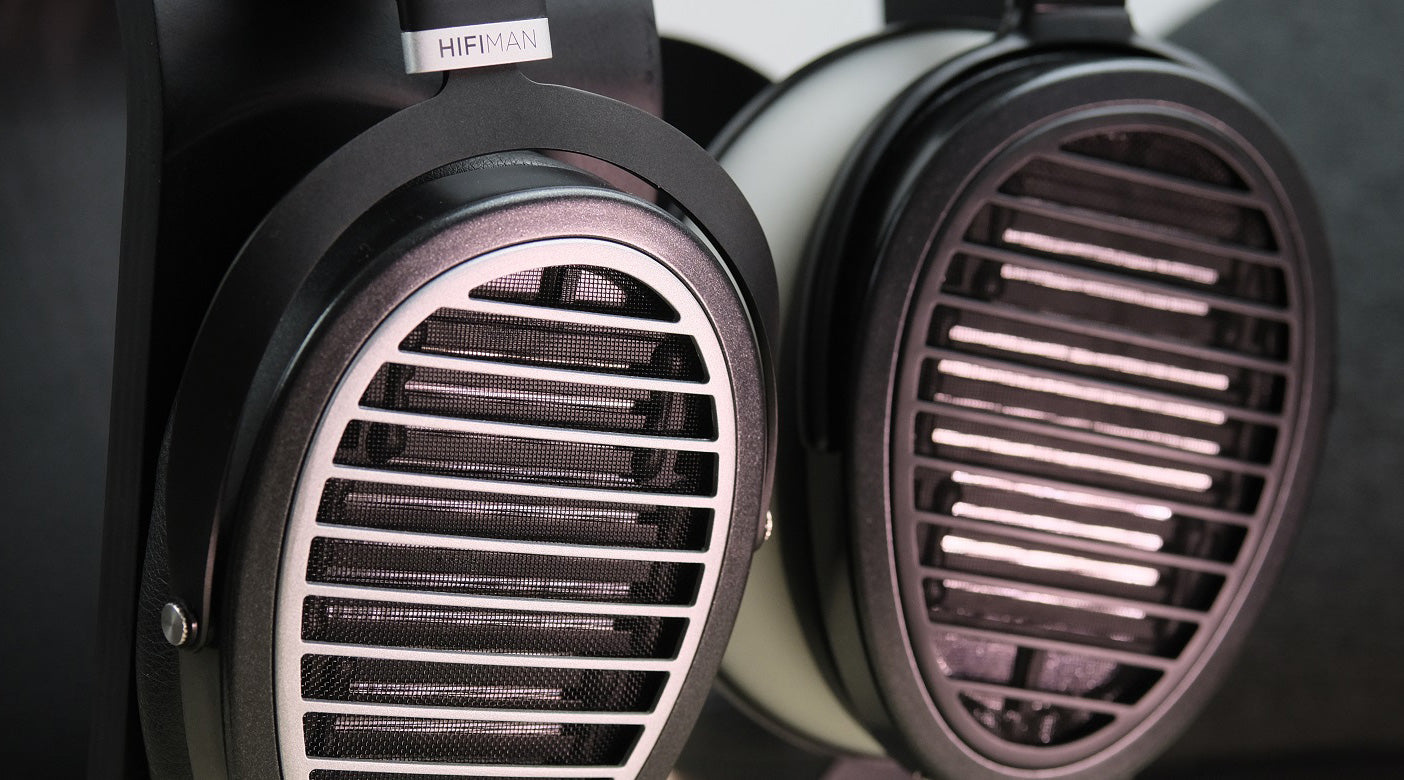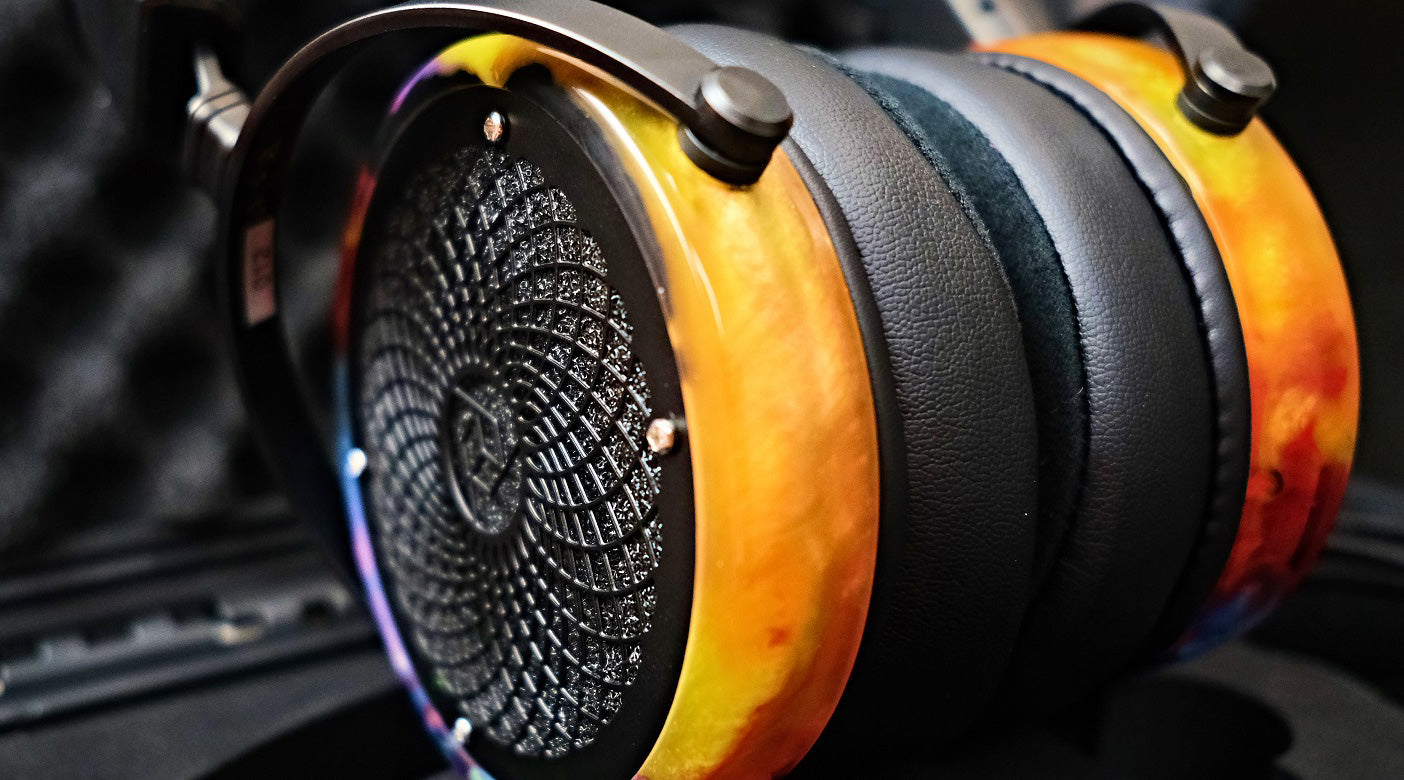Review Written by Ian Dunmore (@Torq)
Introduction
The original Massdrop x Grace Design Standard DAC (colloquially referred to as the “SDAC”) is probably the best known, and most well regarded, sub $100 DAC. It’s been extremely popular as a standalone unit, and has also been integrated into several of Massdrop’s (now “Drop”) headphone amplifiers. The popularity is well deserved as the unit both sounds great and has similarly excellent supporting measurements.
With affordable, popular, amplifiers like the Liquid Carbon X and THX AAA 789 offering balanced inputs, there has been much clamoring for a balanced version of the SDAC. That was answered by Drop and Grace Design with the “Grace Design Standard DAC Balanced” offered at $150, and which is the subject of this review.

The Grace Design Standard DAC Balanced (hereafter “SDAC-B”) I am reviewing is a production sample brought back from Taiwan by Christian. It is from the same run as the units currently on their way to the Drop distribution center, so customer units should be shipping out shortly. And following this review it will be added to “Community Preview Program” offered by “The HEADPHONE Community”
In addition to my usual audition setup/equipment, I also ran the SDAC-B in my office-rig, which comprises the Massdrop x Airist Audio R-2R DAC, THX AAA 789 Linear Amplifier and an Eddie Current ZDT Jr.. My audition playlists and music references can be found here.
Features
SDAC-B supports playback of PCM content at up to 24 bit/384 kHz, as well as DSD256 (4x), from two inputs that are front-panel switchable, with dual outputs - a full-size dual 3-pin XLR output (4.3VRMS) for balanced operation (the primary feature of the unit), and a 3.5mm TRS connection for single-ended output (2.15VRMS).

The SDAC-B supports S/PDIF input via both TOSLINK (using a TOSLINK-mini connector) and transformer-coupled, ground-isolated, COAX (using an included RCA-to-3.5mm adapter), using a shared port, and supporting PCM input at up to 24 bits and 192 kHz.
USB support is also provided, and is switchable between “USB 1”, which is driverless under Windows, macOS and Linux, though is limited to a maximum of 96 kHz PCM content, and “USB 2” (for up to 384 kHz PCM and DSD256), but requires a driver for Windows versions prior to 10 (other operating systems do not require drivers).
Note: The unit is USB powered, so you will always need as USB connection to the device, even if you’re not using that input for music playback. Though this can be a “power-only” connection if you prefer when using non-USB sources.
Build & Package
The build of the SDAC-B is very reminiscent of the original SDAC, being the same form-factor and with the same aluminum-shelled finish. It is a simple, functional, affair that feels well built and has an understated look to it. Creative use of ports has allowed two extra input types and both single-ended and balanced connections to be squeezed into its diminutive chassis vs. the original.

And the package is simple and purposeful, comprising just the DAC, a USB cable and a full-size to 3.5mm COAX adapter for the S/PDIF input.
I only have one quibble with the unit … and that is that I would personally have preferred that it was packaged in the same foot-print casework as the Massdrop x series of amplifiers. That would, however, have had a disproportionate effect on the price of the unit without any benefit to its performance.
Interfaces
When evaluating DACs that have multiple input options, the first thing I typically do is try all of them and see a) if there’s a discernible difference between them and b) if there is, which I like the best.
In my setup, I found no audible differences between the S/PDIF COAX, TOSLINK (using a Lifatec “TLMPG-OS” glass optical cable) or COAX inputs, so I used the USB interface for my listening as it is gives you the broadest range of format and sample depth/rate support.
Sound
The SDAC-B has a fundamentally neutral tone, imbued with a slight hint of sweetness in single-ended operation and a slightly drier presentation when listened to from it’s balanced output. Delivery is smooth and even, maintaining good detail/resolution, accurate timbre, with a little extra presence on the low-end (mostly noticeable in chains that already are a bit on the energetic side of bass performance). I would not go as far as to called the rendering “laid back”, but it is a more relaxed than a lot of budget DACs - a point in its favor in my opinion, as the opposite, at least at this end of the market, tends to come across as a being less refined or perhaps even uncouth.
Engagement factor was high, with things like “Giorgio by Moroder” (Daft Punk, “Random Access Memories”) bopping along energetically, while retaining the overall ambience present in the introductory narrative, while just as deftly evoking the tension and emotion in Paige’s portrayal of Florence. Subtle wavering in her voice, driven by the anguish of the piece, are also audible, indicating solid micro-dynamic capability.
Sibilance and unintended upper-vocal “strain” was absent, even with challenging pieces, though at the same time the sense of top-end air and space is a little subdued here. In DSD replay the top end opens up a little and offers a hint more sparkle to boot. Higher frequency content is free of drama or hash, however, in both cases.
Mid range is clean and detailed with a very subtle sense of sweetness to it. I do mean subtle here, and goes away with balanced output. The SDAC-B handles very complex material well, and even when there is a ton going on, it remains coherent and enables the listener to still focus in on specific elements of the recording without losing said coherence.
The Grace unit is very well behaved with marginal content. I would stop short of describing it as “forgiving” as that tends to imply something is being “covered up”, and that’s not the case here, but was perfectly agreeable listen to with very edgy recordings, old transfers and lossy-sources that could have done with more bandwidth. Put another way, it doesn’t draw attention to every flaw in the source material the way some units can - but doesn’t seem to obscure detail either.
Bass is well delineated, has good impact and control, but is not the last word in pure articulation. Big church organ pieces and some extreme electronic bass components (e.g. the over-pressure prone bass-rolls in Beyoncé’s “Partition”) can convey some bloom. This is an extreme situation, and is something you’d probably have to pay serious attention to to discern, and is not at all dissimilar to the low-end behavior of other similar DACs, but is worth mentioning here as it is even less evident in balanced drive.
Despite the not-quite-laid-back description I’ve given this unit, transient response is very good. Brass has suitable bite, strings have appropriate twang, and percussion has good impact. In hindsight “refined” is probably a better denomination than a qualified “laid back”.
This is a very easy, engaging, and enjoyable listen. Despite having far more expensive gear on hand, once I was listening to a piece, there was no particular desire to stop. It made easy work of my complete audition playlist (not all units survive that) and I was more than happy to just keep listening after each of the formal “listening sessions” I do for these reviews.
DSD Replay
Overall DSD performance is quite similar to PCM replay … remaining fundamentally neutral, if perhaps a little leaner/drier sounding than PCM. Resolution and detail retrieval remain at the same levels as with PCM content. There’s a certain, if minor, element of “roundedness” to the SDAC-B’s delivery with DSD, however. This can result in the sense that transients/impacts are softened a tad but at the same time offers slightly airier upper-treble. This is most noticeable from the balanced outputs, though I’ll re-emphasize that the effect is small even so.
Using HQPlayer to feed the SDAC-B heavily up-sampled and remodulated DSD did not result in any notable improvement in DSD playback, nor was it discernibly better than the native PCM content.
Unlike a lot of DACs, even significantly more expensive units, switching between PCM and DSD, as well as between DSD sample rates, is silent; there are no pops, clicks or other noises.
Comparisons
Apples-to-apples comparisons are a little challenging here, as the SDAC-B is the least expensive, competent, balanced-output DAC I know of, and by some margin (especially relative to it’s $150 asking price).
SDAC-B Single Ended vs. Balanced
The balanced output yields a slightly more “reference” type signature. The single-ended output is a hair warmer and has just a hint of sweetness to it in comparison. The difference is small, and somewhat subtle, and I doubt would be noticeable unless compared directly - but when you do so the balanced output is the more linear and un-editorialized rendering.
The balanced output also yields slightly better resolution and micro-dynamics, a touch more impact, makes low-level detail easier to discern and has improved separation and layering.
vs. Grace SDAC
This is the easiest comparison to make, particularly if you have heard the original Grace SDAC. Comparing the SDAC-B to the SDAC, using single-ended outputs for both, I can’t tell them apart. Using the balanced outputs on the SDAC-B you get the same increase in resolution, impact, micro-dynamics and improved separation and layering as you do versus the SDAC-B with single-ended output.
Cambridge DACMagic Plus
The Cambridge DACMagic Plus is a little more laid back (smoother/warmer) than the Grace unit - which is slightly more incisive and dynamic sounding. Differences are more about signature/preference rather than technicalities. I’d consider them more side-grades than upgrades, regardless of which direction you were to move in. In other words, if you have neither, then the Grace SDAC-B is a much better buy … being less than half the price of the Cambridge unit, and if you already have the Cambridge unit you may as well stick with it.
SMSL SU-8 (V2)
This is, as far as I’m aware, the next least-expensive balanced DAC you can buy, though it still carries a $100 premium over the SDAC-B. That gets you remote control, variable output level (volume control), a tiny display (not useful unless the thing is sitting right next to you) and selectable “Sound Color” settings. These are a DSP-based feature that are supposed to adjust the levels of 2nd and 3rd order distortion, NOT different reconstruction filters. I’d leave it in “Standard” mode; the “Tube” modes do not sound anything like tubes … and the rest resulted in faster onset of fatigue.
Sound wise, the SU-8 is somewhat brighter sounding with more apparent, if not actual, detail. It’s also a bit more “in your face” than the Grace unit. The Grace hits harder in the low-end, where the SU-8 is more nimble on the high. Mids favor the SDAC-B as they’re is some sense of “tension” (I don’t know how else to describe it) there on the SU-8. I would say the SU-8 may have the technical edge, but from a “how much do I like listening to it” I would choose the SDAC-B as I found the SU-8 to become fatiguing after significantly shorter periods of listening.
Summary
One of the most common requests that comes up regarding DACs at “The HEADPHONE Community”, is for a recommendation for an “inexpensive balanced DAC”. Well, the Grace SDAC Balanced is the best answer I currently have in response to that question.
The Grace SDAC Balanced is extremely easy to recommend. I cannot think of a better way to spend $150 or so on a DAC.
It sounds great, with a smooth and even tone and a nice clean delivery that lets it pair well with a wide range of amplifiers. It has flexible inputs, broad format support and most importantly, indeed perhaps its raison d’être, balanced output capability. And all at a “budget” price-point - being the cheapest unit of its type that I am aware of, and by some margin!
It’s an excellent sonic match with the growing array of “Massdrop x” series amplifiers, though of course will work properly with standard single-ended or balanced-capable amplifiers of any brand.

The SDAC-B is an ideal purchase if you’re using single-ended amplification right now, but plan to switch to a fully balanced chain later. And if you just wanted the original SDAC, but with the option for more inputs or something other than USB as a source, this is a reasonably cost-effective way to get it.
Simply put, if you’re looking for a balanced-capable DAC on a budget - you should start your search here.
-Ian Dunmore (@Torq)
—
Join the discussion about the Grace SDAC Balanced here, at " The HEADPHONE Community". Comments and questions should also be directed there.
Members of “The HEADPHONE Community” also have the opportunity to audition the Grace SDAC Balanced as part of their “Community Preview Program”.
—
You can buy the Grace SDAC Balanced directly from “Drop”, here.




Leave a comment
All comments are moderated before being published.
This site is protected by hCaptcha and the hCaptcha Privacy Policy and Terms of Service apply.